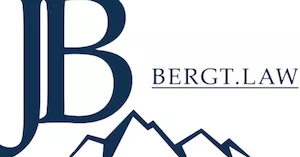- within Technology topic(s)
- in United States
- within Law Practice Management topic(s)
- with readers working within the Consumer Industries and Oil & Gas industries
When the European Securities and Markets Authority ("ESMA") released, in close succession, (i) its Guidelines on situations in which a third‑country firm is deemed to solicit clients established or situated in the European Union and the supervision practices to detect and prevent circumvention of the reverse‑solicitation exemption under the Markets in Crypto‑Assets Regulation ("MiCA") on 26 February 2025, and (ii) its Public Statement on the provision of certain crypto‑asset services in relation to non‑MiCA‑compliant asset‑referenced tokens ("ARTs") and electronic‑money tokens ("EMTs") on 17 January 2025, it effectively superimposed a new, far tighter supervisory grid over an already complex regulatory landscape, thereby obliging non‑EU providers of stable‑value tokens and their intermediaries to revisit, almost clause by clause, every contractual, technical and marketing arrangement that might give Union investors even an indirect pathway to such instruments.
1 The Expansive Notion of "Solicitation"
ESMA's Guidelines abandon any narrow, form‑based interpretation of what constitutes active client acquisition, insisting instead on a technology‑neutral, substance‑over‑form test that captures promotional conduct as diverse as geo‑targeted social‑media banners, embedded widgets in comparison sites, appearance at fintech roadshows, or the mere dissemination of brand‑level advertising with "broad and large reach". Crucially, the authority clarifies that who performs the act is immaterial—solicitation may be carried out, for consideration or otherwise, by influencers, marketing affiliates, white‑label platform operators or any entity "acting on behalf" or possessing "close links" to the third‑country firm, so that even an informal revenue‑sharing understanding can detonate the exemption.
2 Reverse Solicitation: No Longer a Broad Gateway but a Narrow Footpath
Against this backdrop, the long‑standing industry practice of wrapping extensive front‑end infrastructure around "client‑initiated" crypto‑asset flows has become materially riskier, because ESMA instructs national competent authorities ("NCAs") to interpret any user journey that is facilitated—rather than entirely self‑navigated—as prima facie solicitation. Actors, while operating under the Transitional Regime of Art 143 MiCA, should therefore assume that:
- Referral hyperlinks, single‑sign‑on integrations, API calls pre‑populating order tickets or KYC fields, and any remuneration indexed to onboarding or trading volumes will be viewed as evidence that the Union counterparty did not act on exclusive initiative.
- Even a flat hosting fee or "goodwill" sponsorship may be probative if, in its practical effect, it channels users toward a non‑EU service provider .
3 Stablecoins under the Microscope: ESMA's January 2025 Statement
Simultaneously, ESMA's stablecoin statement requires crypto‑asset service providers ("CASPs") to cease any service that amounts to an offer to the public, admission to trading or placing of non‑MiCA‑compliant EMTs and ARTs (e.g., USDT), save for a limited "sell‑only" runway permitting investor exit until the end of Q1 2025. This supervisory stance, though framed as market‑stability oriented, has direct consequences for third‑country firms that previously relied on reverse solicitation, because once trading in a particular token is proscribed, the residual hosting of informational pages or order‑routing tools related to that token can itself morph into prohibited advertising—a point several exchanges discovered when forced to delist USDT for Union customers.
5 Practical Compliance Roadmap
|
Phase |
Immediate Action |
Rationale |
|
Q3 2025 |
Audit every digital touchpoint for EU IP‑targeting, referral codes, or embedded trade widgets and vice versa, referrals to third country jurisdictions. |
Demonstrate "reasonable steps" to avoid solicitation allegations. |
|
Q4 2025 |
Implement geo‑blocking and explicit disclaimers ("copy‑paste URL" model) where full authorisation is not yet feasible. |
Align with ESMA Annex examples of acceptable distance from promotion. |
|
Post‑Authorisation |
Re‑enter market with token offerings that satisfy MiCA Titles III/IV, including white‑paper clearance and EMT prudential regime. |
Leverage first‑mover advantage once competitors exit. |
6 Anticipated Regulator Focus Points
- Digital Forensics. NCAs may employ social‑media scraping, URL suffix scanning and marketing‑monitoring software to unmask hidden EU‑targeting.
- Influencer Chains. Compensation, even in kind, to content creators who mention a third‑country platform may suffice to pierce the reverse‑solicitation veil. Even increased goodwill or other indirect consideration or compensation may already leave the pathway of the narrow reverse solicitation regime. Reverse solicitation may not serve as entry point for providing additional services, other to those that were expressly sought and initiated by a user.
- Order‑Flow Analytics. A suspiciously high clustering of EU IP addresses—even absent overt advertising—can trigger an investigation into de‑facto solicitation.
7 ESMA's "Avoiding Misperceptions" Statement – Specific Perils When Channelling Union Clients Toward Third-Country USDT Venues
In a follow-up intervention published on 11 July 2025—barely four months after the reverse-solicitation Guidelines and six weeks after its stablecoin statement—ESMA issued a three-page alert (ESMA35-1872330276-2329) that zeroes in on the psychological "halo-effect" created when a MiCA-licensed CASP places unregulated functionalities only a click away from its regulated dashboard, warning that investors may erroneously extend MiCA's prudential and conduct-of-business protections to those unregulated corners of the platform.
While the document is framed generically, its most poignant application, is the ubiquitous deep-link or widget that funnels EU users toward a third-country exchange—where USDT (a non-MiCA-authorised EMT) remains freely tradable in leveraged pairs. ESMA's message is unambiguous:
- Functional proximity equals regulatory association. If the gateway is embedded within the same user journey, the NCA may treat the CASP as offering the unregulated service, irrespective of corporate separateness.
- MiCA status may not be flaunted. Any marketing copy, badge, or footer that touts EU authorisation while simultaneously pointing to the USDT venue is flagged as a "don't" and evidence of misleading communication.
- Pop-up acknowledgements are necessary but not sufficient. Even where a check-the-box warning is used, ESMA stresses that overall site architecture must segregate regulated and unregulated zones—with distinct colour schemes, URLs, and documentation—to avoid latent client confusion.
7.1 Concrete Hazard Matrix for CASPs
|
Risk Bucket |
Manifestation When Linking to a USDT Exchange |
Potential Supervisory Consequence |
|
Investor-protection breach |
EU clients mistakenly believe USDT holdings enjoy MiCA asset-safeguarding. |
Art 66 MiCA sanctions; licence suspension. |
|
Misleading marketing |
Homepage banner: "Trade USDT via our global partner—regulated by FMA Liechtenstein!" |
Administrative fine up to 12.5 % of annual turnover; compulsory notice rectification. |
|
Conflict-of-interest opacity |
Revenue-share with offshore venue not disclosed; order-flow routed through affiliate. |
Mandated structural separation; public censure. |
|
Data-protection slippage |
KYC data exported to third-country processor without explicit consent. |
GDPR cross-border transfer penalties; supervisory cooperation request from EDPB. |
7.2 Potential Compliance Trajectory
- Hard Ring-fencing – Host any hyperlink to an offshore USDT venue in a physically separate sub-domain bearing a conspicuous header "Unregulated Services – No MiCA Protections Apply"; require a fresh login and avoid single-sign-on tokens.
- Pre-Trade Risk Pop-Up – Implement a two-step pop-up that (i) identifies the legal entity providing the USDT service, including its supervisory status ("not supervised within the EEA"), and (ii) obliges clients to tick an explicit acknowledgement before proceeding.
- Neutral Branding – Remove all MiCA or NCA references from pages describing or linking to USDT trading; replace with an unbranded, monochrome disclaimer panel to minimise subconscious association.
- Economic Disentanglement – Convert revenue-sharing agreements into flat, arm's-length technology-licence fees to avoid alignment of financial incentives with client onboarding volumes.
- Periodic Client Reminders – Send quarterly e-mails to EU users who have accessed the USDT venue, reiterating that positions are held outside MiCA's protective perimeter and may be subject to foreign insolvency regimes.
These steps are not guaranteed to work and are in no way intended to serve as a guideline to circumvent regulations but are intended to show possibilities on a high level which may be possible in specific scenarios in a transparent and legally compliant way, subject to detailed assessments, legal clarifications and rulings with the competent NCA.
7 Concluding Remarks
In sum, ESMA has signalled, with clarity, that reverse solicitation is intended to be a surgical exemption, not a business model; when coupled with the requirement to discontinue services linked to non‑compliant stablecoins, the operational breathing room for unlicensed third‑country providers of crypto‑asset services has shrunk to a sliver. Entities wishing to continue serving Union clientel would be well advised to commence a dual‑track approach: purge all inadvertent solicitation vectors in the short term, while preparing a fully‑fledged MiCA authorisation dossier (or an outsourcing alliance with an EU‑licensed institution) for the medium term; even so, services with regard to non-MiCA compliant EMTs or ARTs may not be solicited to EU or EEA clientele.
Sources:
- ESMA Guidelines, On situations in which a third-country firm is deemed to solicit clients
- established or situated in the EU and the supervision practices to detect
- and prevent circumvention of the reverse solicitation exemption under the
- Markets in Crypto Assets Regulation (MiCA), 26/02/2025 ESMA35-1872330276-2030
- ESMA Statement 17 Januar, On the provision of certain crypto-asset services in relation to non-MiCA compliant ARTs and EMTs,y 2025 ESMA75-223375936-6099
- ESMA Statement, Avoiding Misperceptions: Guidance for Crypto-Asset Service Providers Offering Unregulated Services, 11 July 2025 ESMA35-1872330276-2329
Key Findings & Core Statements
- ESMA now interprets "solicitation" in an exceptionally broad, tech‑agnostic manner, covering virtually every form of digital or physical outreach to EU users.
- Any economic or functional link between an EU‑based platform and a non‑EU service provider risks nullifying the reverse‑solicitation defence.
- Stablecoin services involving non‑MiCA‑compliant EMTs/ARTs must cease beyond "sell‑only" functionality, with hard deadlines set for Q1 2025.
- Linking an EU-authorised interface to a third-country USDT exchange can erase the reverse-solicitation defence and trigger MiCA enforcement.
- ESMA prohibits leveraging MiCA authorisation as a marketing asset when steering clients into unregulated stablecoin markets; neutral, segregated branding is imperative.
- Pop-up acknowledgements, site segregation, and clear entity attribution form the bare-minimum toolkit ESMA expects before a CASP may claim to have mitigated investor-protection risks.
- Revenue links tied to EU client volumes are a red flag.
- Firms failing to implement these safeguards risk fines, licence suspension, and reputational damage across the Single Market.
The content of this article is intended to provide a general guide to the subject matter. Specialist advice should be sought about your specific circumstances.


